I love this artist Cal Lane, in spades
Bridging industry and fine art Cal Lane eliminates the tough and imposing characteristics of steel and iron to create alluring delicate and intricate sculptural forms using wheelbarrows, shovels and fuel tanks as her canvas. Lane transforms these once functional objects into ‘industrial doilies’, ornate with lacy motifs that reference domestic life. 1
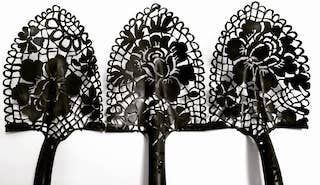
Soil is reinterpreted and re-purposed elevating it from a modest material of the Earth to a medium for the artists imagination. 1
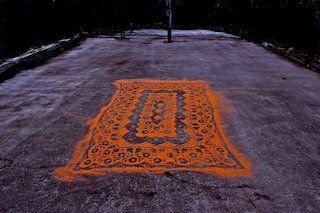
Often contradictory, Lane’s work juxtaposes strength and fragility while blurring the often prejudiced lines between what is conceived as either masculine or feminine. 1
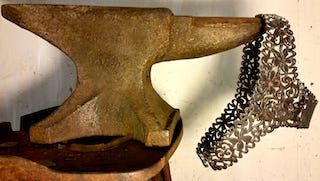
Lane from British Columbia in Canada, burns through steel plate with an oxyacetylene torch and perforates thinner steel sheet with a plasma cutter. She burns delicate lace-like patterns into reclaimed steel objects. Not to be confused with welding, which joins two metals by melting them. Further examples of Cal's fine work can be seen below.
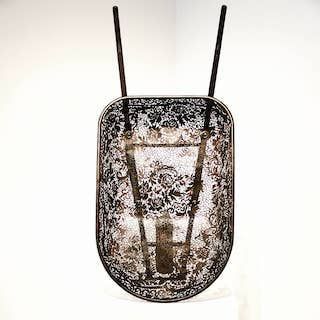
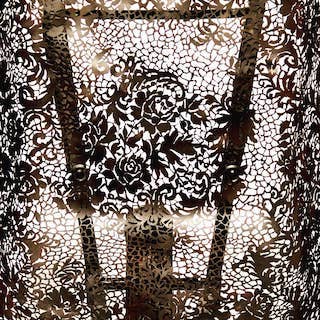
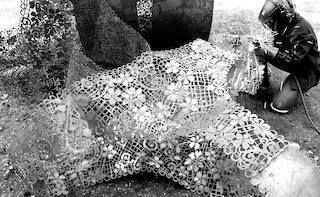
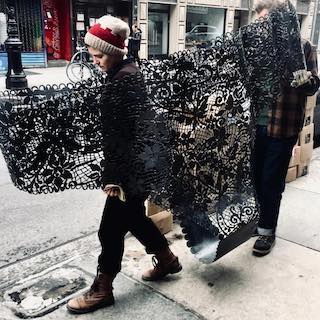
Imagine the physical stamina required to complete a work? Working outside in the elements, in the heat, cold wind and rain, wearing all the required safety paraphernalia.Lane often works on old oil drums of all sizes, endeavouring to draw attention to the world's insatiable thirst for oil.
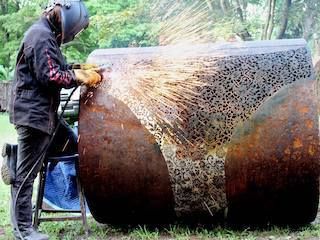
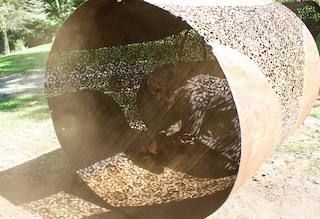
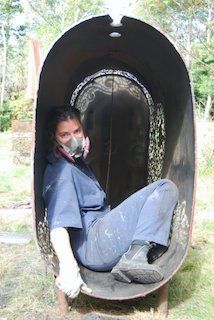
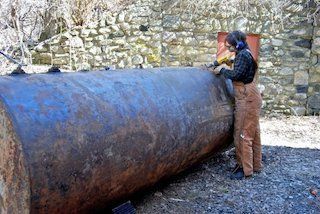
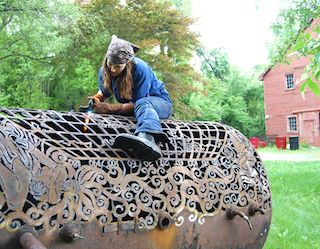
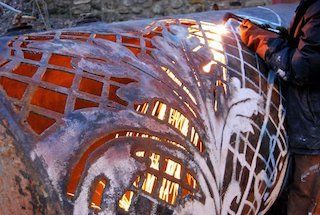
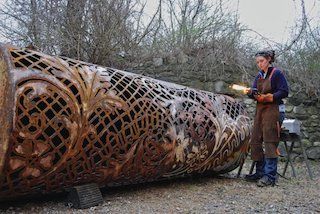
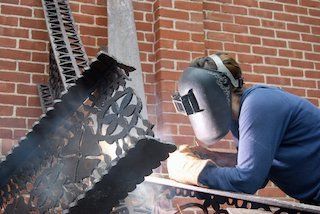
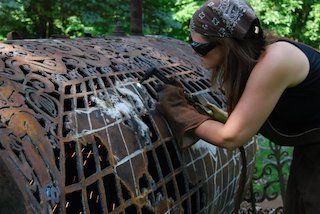
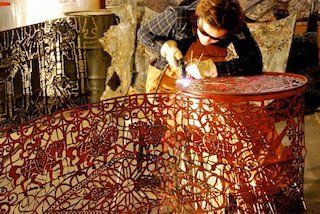
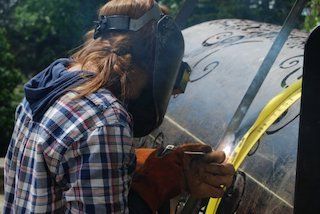
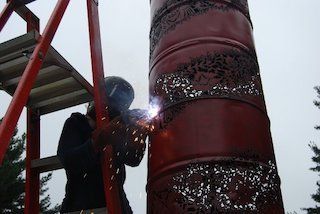
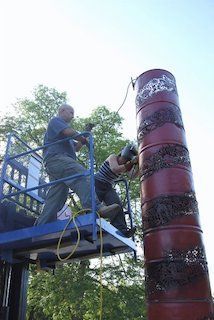
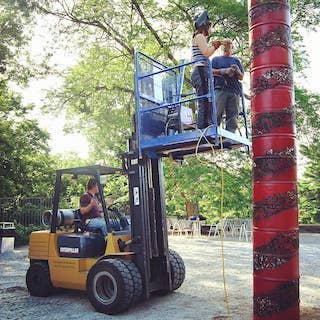
I think these installations have a beauty and grace when being installed too. Do you think the same?
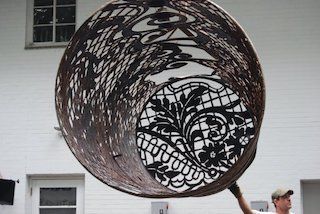
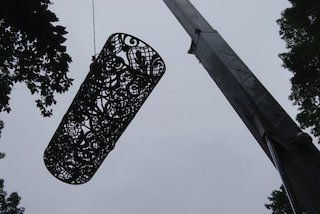
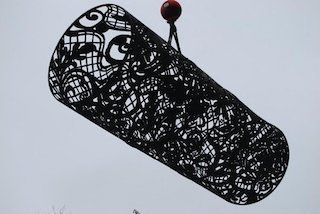
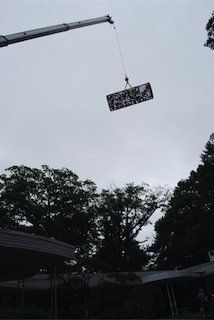
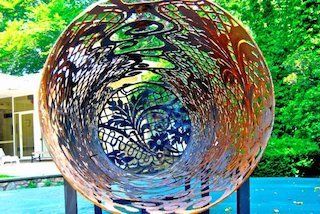
Cal Lane exhibited in the 2012 Sydney Biennale inside The Turbine Shop on Cockatoo Island. Cal Lane's Domesticated Turf featured a live performance of the artist wearing a dress as she cuts her way out of a shipping container using a welding torch.
Lane's first career was in hairdressing but the confessed tomboy admits she was often sacked. "I didn't really understand the whole point of fussing with hair and that kind of stuff, so I quit and became a welder." 2
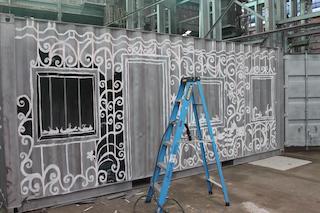
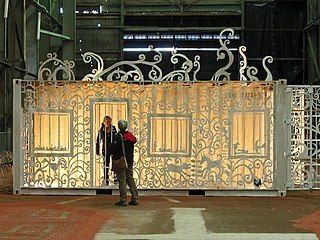
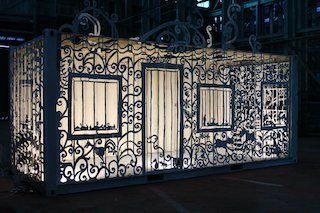
"I'm going to cut it into a lacy structure, but it's also going to have prison bars," Lane told Andrew Taylor from the Sydney Morning Herald at the time. "I like playing with opposites: the industrial versus the domestic, which this is going to become," Lane says. "Essentially, it's my frustration with social conventions, I guess, that is the seed to pretty much all of my work." Lane says that although plasma cutting is fairly safe, cutting metal to create what she calls her "industrial doilies" can be back-breaking work.2
Lane's Biennale installation also featured a lacy sand pattern stencilled across a large part of the former shipbuilding warehouse's floor.
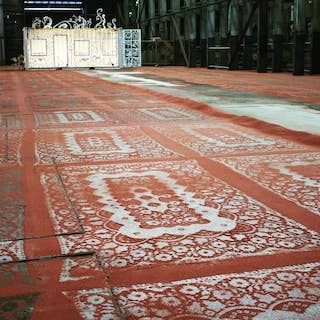
From its creation in Sydney to it finally being placed in its permanent home at the National Gallery of Australia, in Canberra. Click here to watch Lane talking about the making of this work.
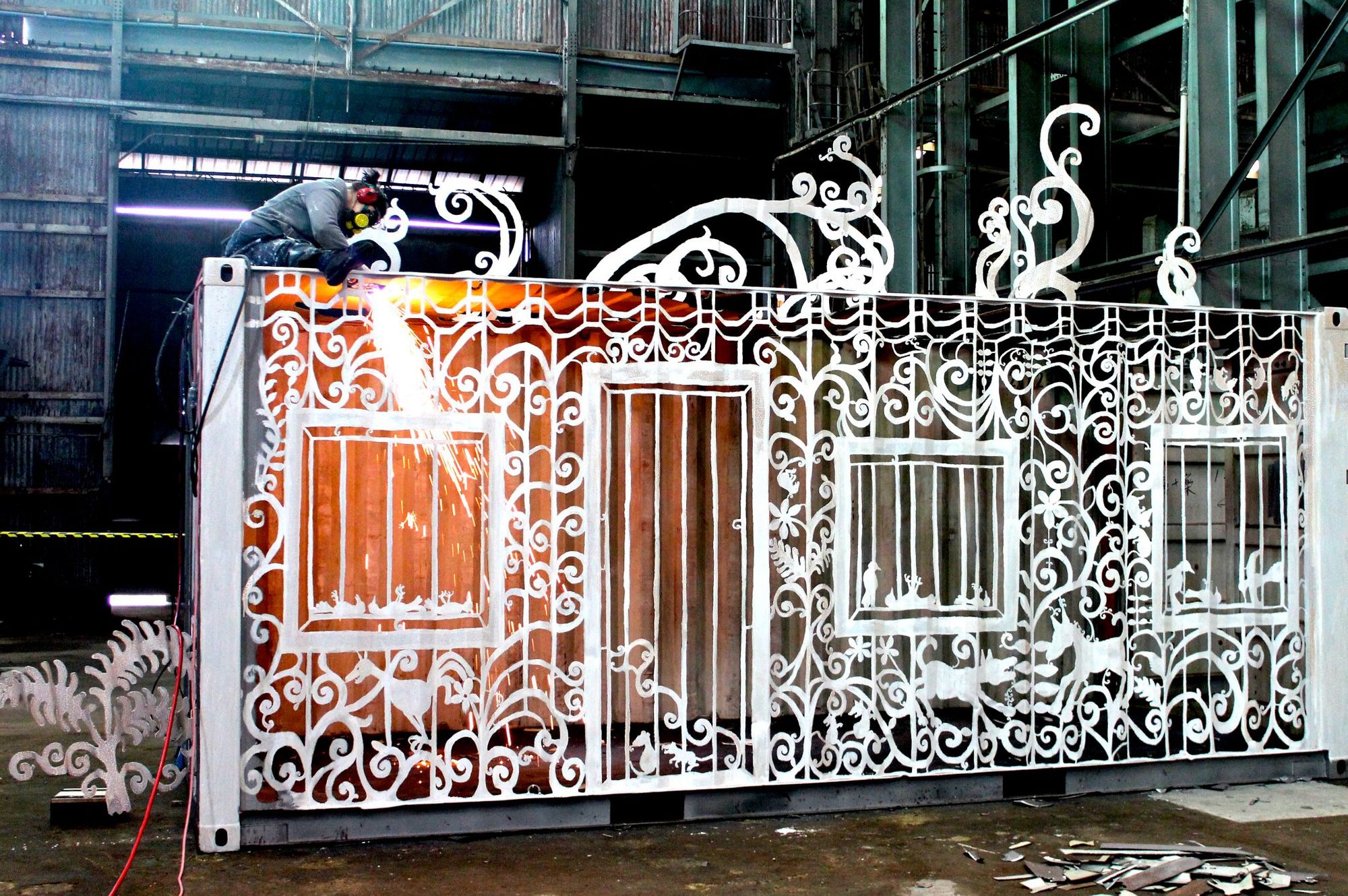
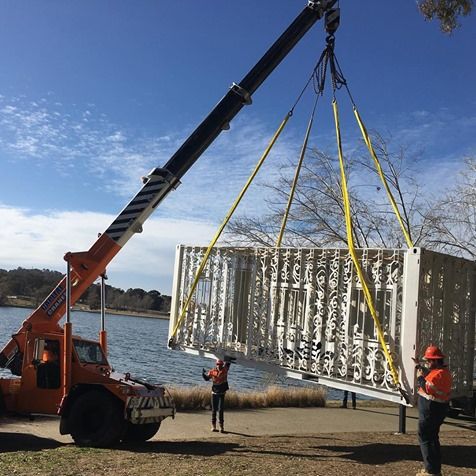
Lane draws repetitive shapes on found steel objects, then cuts them out in stencil-like patterns. The positive forms are removed (and stored). She repeats this process again and again until the steel is riddled with perforations, with just enough of the original structure remaining to retain the form of the ready made.The dialectic is obvious: industrial versus domestic, strong versus delicate, masculine versus feminine, functional versus decorative.3
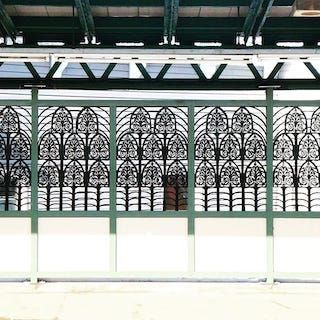
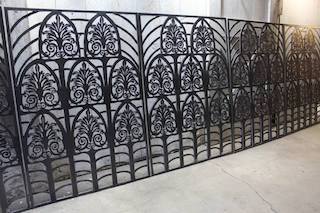
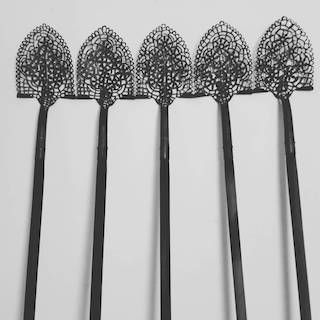
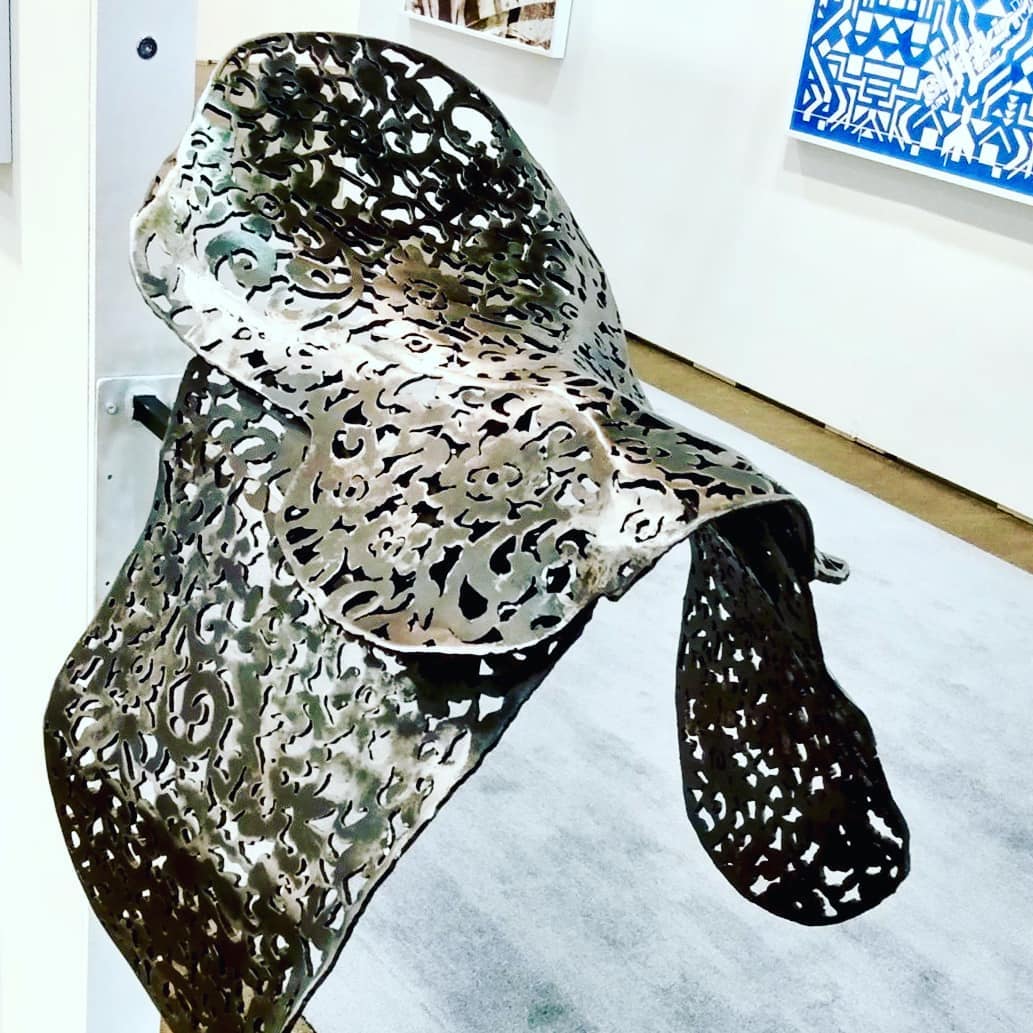
Today I will leave you with some beautiful imagery of Cal Lane, creating 'The Digs' captured by Nicholas Bohun the for MTA arts commission Transit and Urban Design.
Credits
1 Burlington City Arts Vermont
2 Andrew Taylor smh.com.au
3 Robin Peck sculpturemagazine.art
